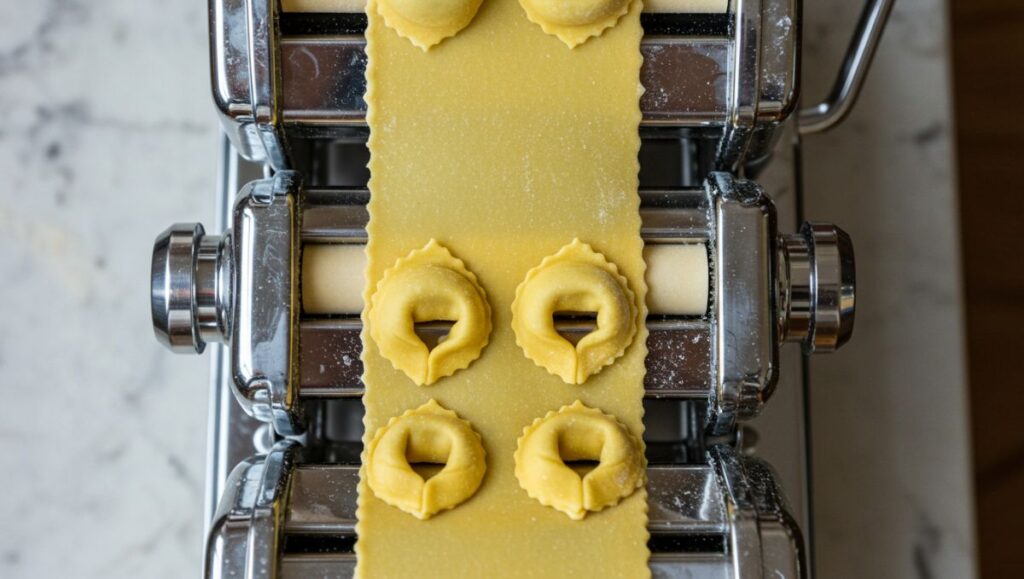Italian cuisine is famous worldwide for its fresh pasta, and among its most beloved varieties is tortellini. These small, ring-shaped pasta filled with meats, cheese, or vegetables are a culinary symbol of Bologna and Emilia-Romagna. Traditionally, tortellini are shaped by hand, requiring time, skill, and patience. But in today’s fast-paced kitchens, technology lends a hand through the tortellinatrice — a machine specifically designed to produce tortellini efficiently and consistently.
This article explores the tortellinatrice, how it works, its role in traditional and modern kitchens, and why it has become an essential tool for pasta makers worldwide.
What Is a Tortellinatrice?
The word tortellinatrice combines “tortellini” and the Italian suffix “-trice,” indicating a machine or device that performs an action. Simply put, a tortellinatrice is:
-
A specialized pasta machine for shaping tortellini.
-
A tool that automates what chefs traditionally do by hand.
-
A device found in professional kitchens, pasta factories, and artisanal shops.
While nothing can truly replace the artistry of handmade tortellini, the tortellinatrice ensures efficiency and uniformity, particularly when producing pasta at scale.
The Tradition of Handmade Tortellini
Before diving into machines, it’s important to understand the traditional process:
-
Fresh Dough – Made with eggs and flour, rolled into thin sheets.
-
Filling Preparation – A mixture of meats, cheese, nutmeg, and sometimes vegetables.
-
Cutting Squares – Dough is cut into small, even squares.
-
Folding and Shaping – Each piece of dough is folded over filling and wrapped into the iconic tortellini shape.
This process is delicate and requires craftsmanship. Families in Emilia-Romagna often make tortellini by hand during holidays, passing the skill down through generations.
Why the Tortellinatrice Was Invented
As pasta became a global export, demand grew beyond what handmade methods could supply. Restaurants and food manufacturers needed:
-
Consistency – Tortellini needed to be the same size and shape.
-
Speed – Machines can produce hundreds per minute, while hand-making is much slower.
-
Efficiency – Less labor-intensive production while maintaining quality.
Thus, the tortellinatrice was created to bring industrial efficiency to an artisanal product.
How a Tortellinatrice Works
Though models vary, most tortellinatrice machines function in similar ways:
-
Dough Feeding – Sheets of fresh pasta dough are placed into the machine.
-
Filling Injection – The filling is precisely portioned and placed onto the dough.
-
Cutting & Folding – The machine folds the dough around the filling and seals it.
-
Shaping – Specialized rollers or molds form the characteristic tortellini “bellybutton” shape.
Advanced machines allow for customization, such as different fillings, dough thickness, and sizes.
Types of Tortellinatrice
1. Manual Tortellinatrice
Smaller, hand-cranked models suitable for home cooks or artisanal shops producing limited quantities.
2. Semi-Automatic Machines
Used by small restaurants or local pasta shops, these machines automate shaping while still requiring some manual input.
3. Fully Automatic Industrial Machines
Designed for large-scale production, capable of making thousands of tortellini per hour with precision and uniformity.
Benefits of Using a Tortellinatrice
-
Efficiency – Produces large batches quickly.
-
Consistency – Ensures uniform size and shape for professional presentation.
-
Versatility – Accommodates different fillings and dough types.
-
Labor Saving – Reduces manual work in busy kitchens.
-
Accessibility – Allows small businesses to scale production without sacrificing quality.
Tortellinatrice in Modern Cuisine
Even as machines gain popularity, the debate between handmade vs. machine-made pasta continues. Handmade tortellini hold cultural and artisanal value, while machine-made pasta ensures accessibility and affordability.
In fact, many Italian pasta shops use a hybrid approach:
-
Handmade tortellini for special occasions or gourmet menus.
-
Tortellinatrice machines for regular sales and large-scale distribution.
This balance preserves tradition while meeting modern demand.
Choosing the Right Tortellinatrice
For anyone considering investing in a tortellinatrice, here are factors to consider:
-
Production Volume – Home cooks may prefer manual models, while businesses benefit from industrial machines.
-
Budget – Machines vary in price, from hundreds to tens of thousands of euros.
-
Space – Industrial machines require larger kitchens or production facilities.
-
Customization – Some machines allow for ravioli, cappelletti, and other pasta shapes.
Maintenance and Care
To keep a tortellinatrice functioning properly, regular maintenance is essential:
-
Cleaning after each use to prevent dough buildup.
-
Lubrication of moving parts.
-
Inspection for wear and tear.
-
Professional servicing for larger, industrial models.
A well-maintained machine can last for many years, making it a solid investment.
The Cultural Impact of the Tortellinatrice
While purists may insist that true tortellini must always be handmade, the tortellinatrice has helped spread Italian cuisine across the globe. Without it, mass production of fresh stuffed pasta would not be possible, and tortellini might have remained a regional delicacy rather than an international dish.
It represents a fusion of tradition and innovation, where culinary heritage meets modern technology.
Tortellinatrice Beyond Italy
Though deeply tied to Italian culture, the tortellinatrice is now used in:
-
European pasta shops exporting traditional products.
-
North American restaurants producing authentic pasta at scale.
-
Asian markets adapting the machine for local dumpling or wonton production.
This adaptability proves its relevance beyond tortellini, making it a versatile kitchen innovation.
Conclusion
The tortellinatrice is a remarkable example of how tradition and technology can work hand in hand. While the artistry of handmade tortellini remains unmatched, machines have made this iconic pasta accessible to people worldwide. From small artisanal shops to massive industrial kitchens, the tortellinatrice has secured its place in modern cuisine, ensuring that tortellini remains a global favorite for generations to come.







